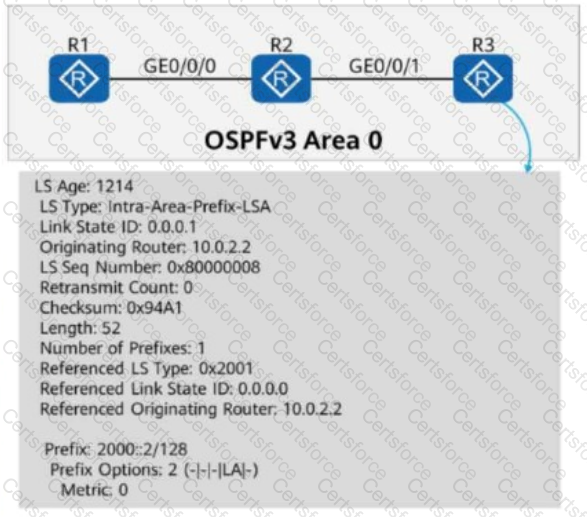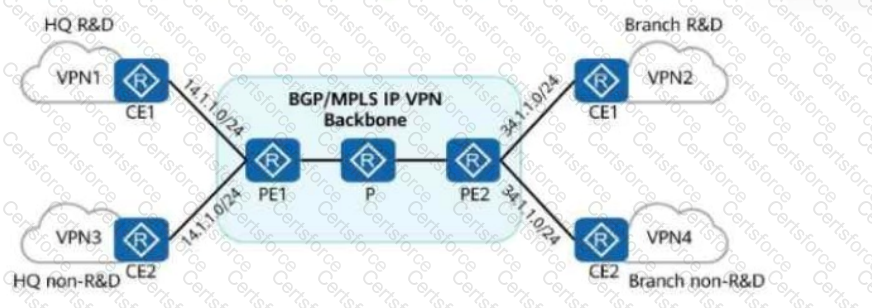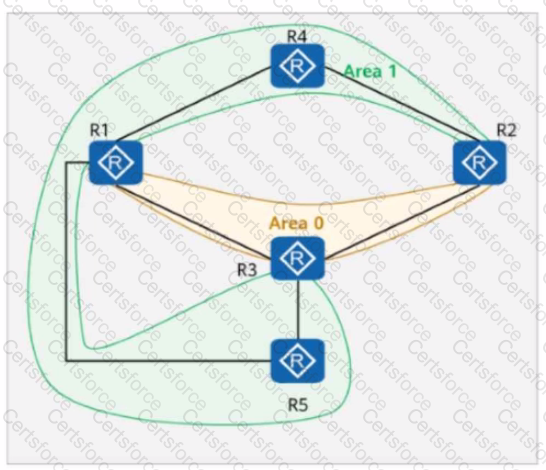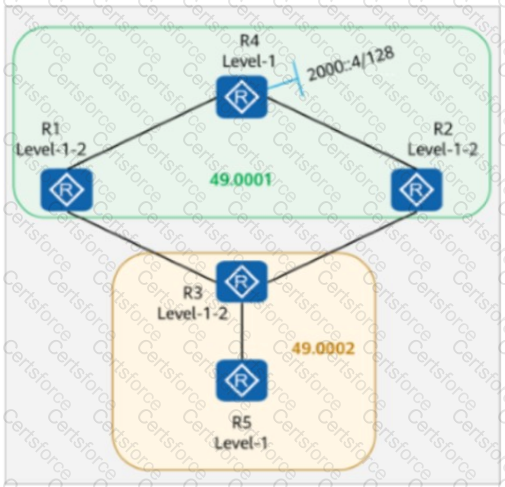On the OSPFv3 network shown in the figure:
OSPFv3 is enabled on the interfaces connecting R1, R2, and R3.
The router ID of each router is 10.0.X.X, where X is the number of the router.
If you check detailed information about an LSA on R3, the command output shows that the LSA is generated by R2 and describes the IPv6 prefix address associated with the Router-LSA.

Is this statement TRUE or FALSE?
On a BGP/MPLS IP VPN network, which of the following are carried when a PE advertises VPNv4 routes?
A network engineer enters dir on the device to obtain the following file names. Which is most likely to be the version file of the device?
In the figure, the company wants to ensure secure communication between the headquarters and branch, and isolate the R&D areas from non-R&D areas, without changing the current network deployment.
To meet this requirement, an administrator deploys BGP/MPLS IP VPN on the network.

Which of the following statements are true?
In CE multi-homing scenarios, if BGP AS number substitution is enabled on PEs, you can run the peer soo command on the EBGP peers of the PEs and CE to configure the Site of Origin (SoO) attribute to prevent loops.
To support the processing and calculation of IPv6 routes, IS-IS adds a new NLPID to TLV 129. The NLPID is an 8-bit field that identifies network layer protocol packets. Which of the following is the NLPID of IPv6?
On the OSPFv3 network shown in the figure, area 1 is a common area. Which of the following statements are true?

An interface of a switch is in error-down state. A possible cause is that the average rate of broadcast packets received by the interface exceeds the upper threshold set by the administrator for storm control.
On the IS-IS IPv6 network shown in the figure, multi-topology is enabled on all routers. The IPv6 address of Loopback0 on R4 is 2000::/128. The IPv6 summary 2000::/64 level-1-2 command is configured in the IS-IS processes of R2 and R1. Which of the following statements is false?

OSPFv3 runs on R1 and R2, and the IPv6 addresses configured for the interfaces are marked in the figure.
The router IDs of R1 and R2 are 10.0.1.1 and 10.0.2.2, respectively.

Which of the following statements is true?